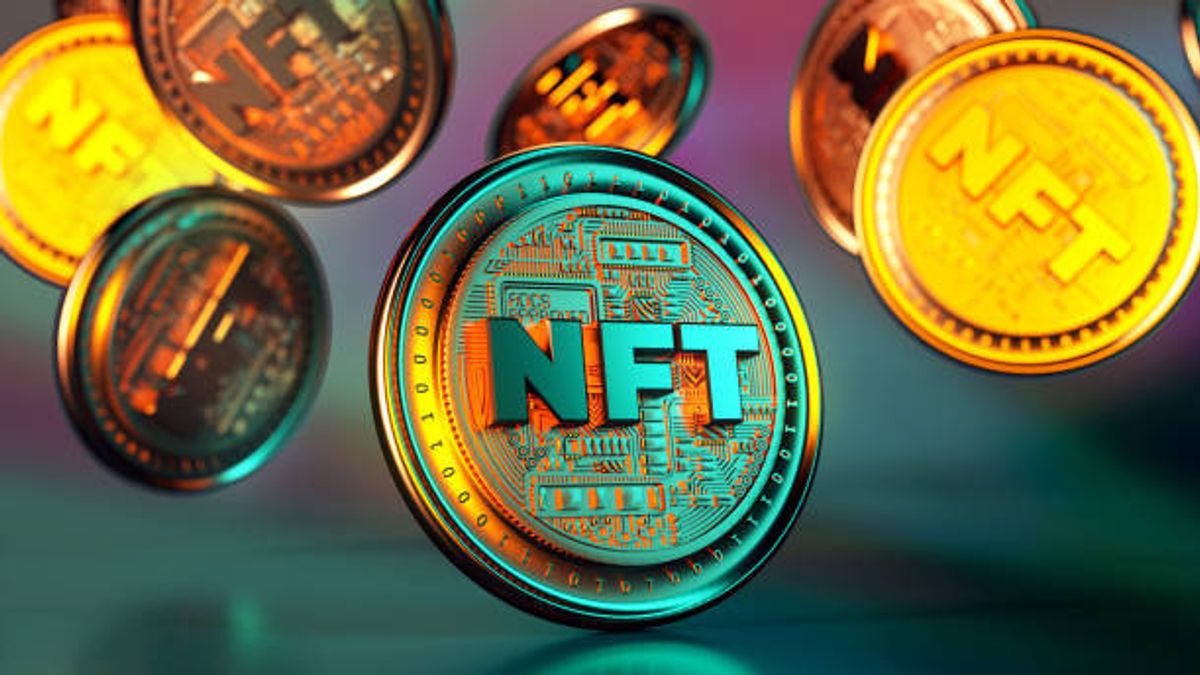JAKARTA - There is not a single rule book and reference on how to assess the price of NFT. Metrics used to evaluate private companies or conventional investment facilities such as stocks do not apply at all to NFT.
Usually, payments made by the last buyer can actually provide an indication of value. However, for NFT, it is difficult to guess what the next buyer might pay for, depending on their own estimates.
Most of these digital asset buyers don't have the skills to logically ascertain the value of these NFTs and base their offerings solely on guesses. For sellers as well, it is difficult to determine what they might receive for the tokens they hold.
Over time, the value of NFT is driven by perceptions in which buyers and sellers may not have any control over their activities.
An artwork NFT may be in great demand for a given time, with the possibility of buyers finding it rare and expecting to gain value in the near future. Then, suddenly, they may find that digital images are available on the Internet for free and there may not be any buyers left for the NFT. To clarify how we assess NFT, here's an explanation from Cointelegraph.
Factors To Turn NFT Values
The artwork NFT of well-known artists or tokens linked to real assets may have a predetermined value. However, in most cases, investors and traders find it difficult to determine the value of the NFT.
Oddity
NFT demand is directly proportional to its scarcity, but how do you know how rare the NFT is? The unique artwork of a well-known illustrator may be a great example of a rare NFT as is the token printed by high-end celebrities.
Several rare game items can also successfully enter this category. The scarcity factor brings many intrinsic values to this NFT.
Unchangeable proof of ownership also gives NFT holders a sense of difference and then, value. Everyday's The First 5000 Days by Beeple and Jack Dorsey's first twitter NFT is the main example of NFT with the element of scarcity.
Usage
To find out how to evaluate NFT projects, utilities appear as key parameters. To bring value, NFT needs to have the utility in real applications. For example, NFT can be used to mark real estate, precious metals, and even securities or to represent virtual land or game assets and in many other ways.
The world of NFT itself is still in its new stage of birth and as it develops, new innovative use cases will certainly emerge.
Right after printing, NFT draws value from its built-in characteristics. Over time, the added value depends on the utility and community power of the underlying project. Decentraland's NFT, which refers to the virtual land plot in the project, is a very good example of the token.
Tangibility
NFT related to real-world objects attracts intangible elements. Empowered by the deed of ownership on the blockchain, it creates direct value in its form. NFTs can be used effectively to underscore ownership rights and eliminate examples of fraudulent activities. The practical use of NFTs in projects in which they engage has an influence on their value.
NFTs that have real value are perfect for short-term and long-term trades. Some NFTs, such as tickets, may have expiration dates, while others, such as those representing real estate, can grow value over time.
Interoperability
The key factor in the NFT value profile is interoperability, which is the ability to use tokens in different applications. For example, if the same weapon can be used in different games, there are more opportunities to get token value. How non-exchangeable tokens work on different blockchains will always make transactions simpler.
It is difficult to realize interoperability, as developers have to build a wide network of applications where tokens can be used. An interesting set of use cases helps in instilling NFT interoperability. Another strategy that developers can follow is to develop partnerships with other projects to bring benefits to people who have their tokens.
Social Evidence
Social evidence related to the project behind NFT is one of the determining factors that determine the value of NFT. Opening their profile on social media platforms like Twitter and Instagram can help someone measure their acceptance. If the number is low, it shows that they have not been able to create a solid foundation for themselves.
When meeting people or projects for the first time, there is a natural tendency to take signals from people around the project. Social evidence shows what people, in general, think about a project and help in making decisions.
Ownership History
The identity of the publisher and owner of the NFT previously affected its value. Tokens created by prominent people or corporate entities benefit from the high historical value of ownership. You can increase the NFT value composition by collaborating with people or companies with strong brand values to issue NFT.
Reselling NFTs previously held by influential people is another way to gain traction. Markets and sellers can help buyers find information about previous NFT owners by providing a simple tracking interface. Highlighting the address of investors who take home large numbers of NFT trading will help buyers gain valuable insight.
Liquidity Premium
NFTs with high liquidity carry higher value as well. Secondary markets provide a place to trade ERC or BSC standard NFTs by no friction, by immediately granting buyers access.
Traders prefer to put their money into the NFT category with high trading volume as more liquidity helps them take advantage of it easily. The highly liquid NFT is likely to maintain its value even if the relevant platform is closed.
The token economy emphasizes increased engagement and beyond, liquidity will push the NFT value composition up. A built-in system that lowers the value of NFT because it is not used for a long time and encourages competitive assets to help build a strong market. As NFT market growth, the system will come to support asset liquidity.
Speculation
There were times when speculation became a catalyst behind price appreciation, for example, the price of CryptoKitty #18 slipped from 9 ETH to 253 ETH in just three days in December 2017. While one critical thought opposes speculation as one of the drivers of judgment, speculating coming naturally to humans and cannot be eliminated practically.
Even in conventional financial systems, instruments such as derivatives are based on speculation. In this case, speculation into non-sepele components of the NFT ecosystem is not a surprise. The graphic price performance of NFT items, asset changes located under the project, and even events beyond your direct control can trigger speculation and push the price of NFT.
Sustainable Changes in NFT Ecosystems
NFT is a newborn ecosystem that undergoes a sustainable evolution. Various factors that affect the value of NFT are growing rapidly and to increase accuracy, you need to consider everything.
In addition, broad value is a subjective concept, although you may argue that discussions are about intrinsic values. In this scenario, finalizing how you determine the value of NFT in the future becomes more challenging.
NFT is an asset class with an unlimited possibility, we can safely assume that its versatility will continue to grow and favorable opportunities will be available in various subcategories. The number of cases using NFT has increased rapidly. Now, NFT can be used in applications such as ticket distribution to ensure voting rights.
When exploring NFT values, you just need to pay attention to that all things that shine are not diamonds. So be patient and consider various factors when making decisions. When all types of NFT markets appear, from all-inclusive platforms such as OpenSea to niches such as Real Nifty, conducting due diligence and making the right decisions becomes very important.
The English, Chinese, Japanese, Arabic, and French versions are automatically generated by the AI. So there may still be inaccuracies in translating, please always see Indonesian as our main language. (system supported by DigitalSiber.id)













